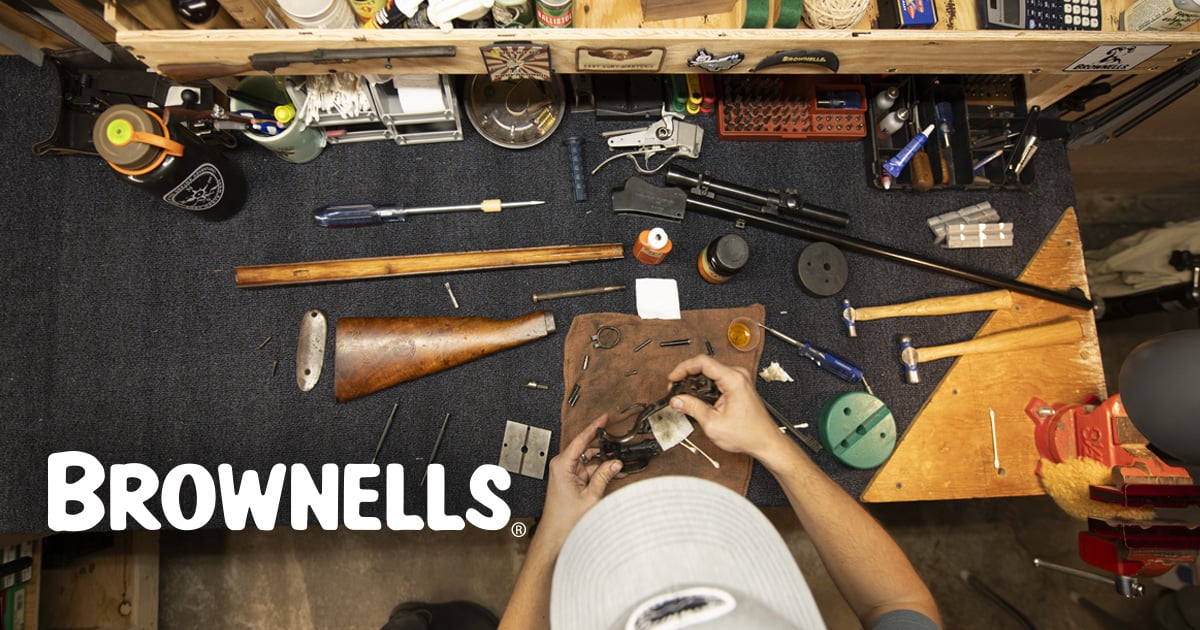So far both the Lee and the RCBS have been found to yield horrible results. Is there a good one out there?
EDIT: I tested a new method without using a traditional deburr tool and I like my new way better.
I used my Hornady case trimmer to trim to length. The pilot actually does a good job of removing most of the inner burr.
Then I mount the case in my drill which is clamped to my desk. I use a Lee case holder chuck for this.
Then, with the case spinning, I run a copper neck cleaning brush through the neck five times.
Then I use a Scotch heavy duty scouring pad and with my thumb, hold it tight against the case mouth, kind of capping it, pushing towards my drill, along the axis of the shaft. I hold it tight there for five seconds. Since the pad is spongy, it actually squeezes in to the mouth, and a little around the outside of the case, polishing and doing an excellent job of deburring.
Then I grab the scouring pad and pinch the neck. I hold it there for five seconds, and then slowly pull it off the neck, squeezing as I go, so most of the pressure is on the outside edge of the case mouth, where most burr would be.
When I'm done, I have a gleaming, polished case mouth, with machined quality burr-free edges. I think the scouring pad probably takes just enough of an edge off to make it the edges snag free.
Yes, they are squared off, but I just seated a bulled at there was no copper shaving at all, and no more resistance than with a beveled mouth.
Additionally, in Richard Franklin's precision reloading video, he talks at length about keeping the perfect inner edge of a trimmed case mouth. He never uses ball expanders or inner bevel tools, and he uses steel wool instead of a scouring pad, but the pad works well and I think it's more precise. He wants that inner edge to be perfectly consistent all the way around, so the the whole bullet leaves the case at the same time, and the gap created is consistent all the way around.
I think my method achieves that, and I think my cases look great.

EDIT: I tested a new method without using a traditional deburr tool and I like my new way better.
I used my Hornady case trimmer to trim to length. The pilot actually does a good job of removing most of the inner burr.
Then I mount the case in my drill which is clamped to my desk. I use a Lee case holder chuck for this.
Then, with the case spinning, I run a copper neck cleaning brush through the neck five times.
Then I use a Scotch heavy duty scouring pad and with my thumb, hold it tight against the case mouth, kind of capping it, pushing towards my drill, along the axis of the shaft. I hold it tight there for five seconds. Since the pad is spongy, it actually squeezes in to the mouth, and a little around the outside of the case, polishing and doing an excellent job of deburring.
Then I grab the scouring pad and pinch the neck. I hold it there for five seconds, and then slowly pull it off the neck, squeezing as I go, so most of the pressure is on the outside edge of the case mouth, where most burr would be.
When I'm done, I have a gleaming, polished case mouth, with machined quality burr-free edges. I think the scouring pad probably takes just enough of an edge off to make it the edges snag free.
Yes, they are squared off, but I just seated a bulled at there was no copper shaving at all, and no more resistance than with a beveled mouth.
Additionally, in Richard Franklin's precision reloading video, he talks at length about keeping the perfect inner edge of a trimmed case mouth. He never uses ball expanders or inner bevel tools, and he uses steel wool instead of a scouring pad, but the pad works well and I think it's more precise. He wants that inner edge to be perfectly consistent all the way around, so the the whole bullet leaves the case at the same time, and the gap created is consistent all the way around.
I think my method achieves that, and I think my cases look great.





Comment